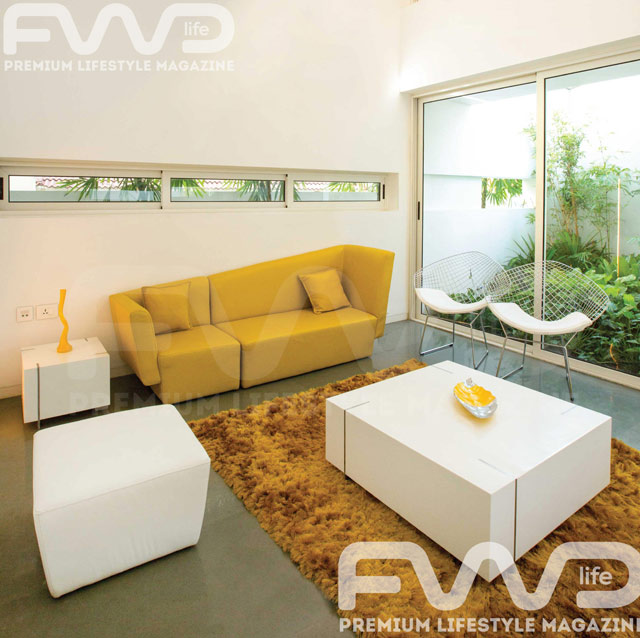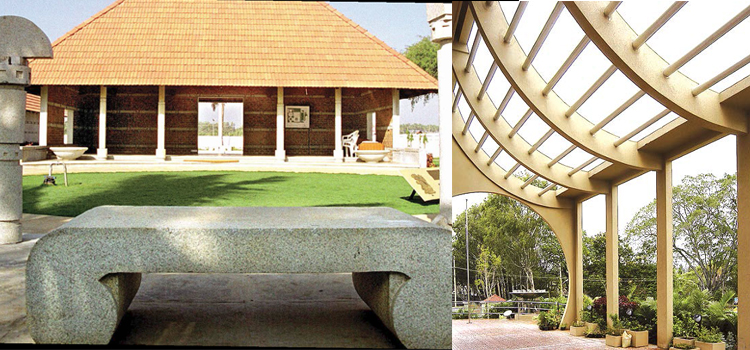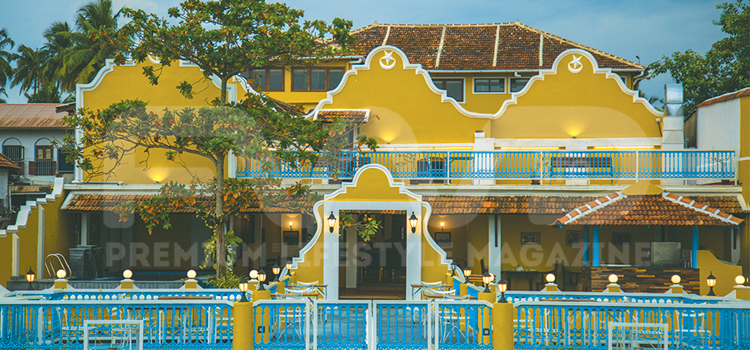Architecture
The Skewed House : Modern and Minimalistic Architecture

Photos: Suneesh Suresh
The tiled roofs in the neighborhood form an undulating plane of red and brown, sheltering familiar volumes that make a home in Kerala. Cutting through the recognizable fabric, grey concrete fingers reach for the skies along with the mountains in the background. In stark contrast to everything around it, the residence is unapologetically modern and minimalistic. Named Nikunj, which means nest in Sanskrit, the home is a composition of volumes and planes. Known for their unique architectural language, architects Lijo and Reny from Thrissur, have gained yet another feather in their cap, with this award winning residence.
The Skewed House, as the architects refer to it, arises out of a thirteen cent skewed plot. The house remains faithful to its context in terms of climate and requirements but poles apart from the existing aesthetics. The owners of the house, a doctor couple with two children, approached the architect as they wanted something contemporary. They had scoured the web for inspiration and knew that Lijo and Reny could give them their dream home. The home is a sculptural testament to good planning, play of volumes with scale and the modern outlook of the owners.
Sense of existence
Would you conform or would you breakaway? The house asks as you approach it through narrow streets of the residential neighborhood. Music from a nearby temple creates a mystical aura that at first confuses you, then reminds you that we are in India, where disparity is at home. The east facing house breaks out in three bays, which occupies almost the entire plot. A well manicured lawn sits at its foot, which moves into bamboo alcoves perforating the façade. The aluminum grills on the entry side glisten in the morning light and heat. The building certainly makes a statement, frozen in movement against the mountains and the sky.The fenestrations are minimal, as the house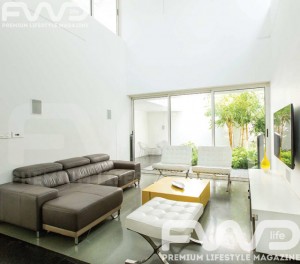 shuts away the busy town to provide a calm and quiet haven inside. Strip windows move across the planes forming the concrete envelope. As majestic as the house is, the entry is subdued and informal. A humble welcome. Past the cheerful frangipani tree, are the glass doors that lead to a simple foyer in the first bay. The leather finished black granite floors feel cool under your bare feet, in contrast to the burning heat of Palakkad town.
shuts away the busy town to provide a calm and quiet haven inside. Strip windows move across the planes forming the concrete envelope. As majestic as the house is, the entry is subdued and informal. A humble welcome. Past the cheerful frangipani tree, are the glass doors that lead to a simple foyer in the first bay. The leather finished black granite floors feel cool under your bare feet, in contrast to the burning heat of Palakkad town.
Visual treats
You will be surprised to find that there are no windows in the house, at least in the traditional sense. The strip windows and one full glass façade in each room, bring in abundant light and a glimpse of the green outside. The transparent surface is visually cut off from the outside with clever planning. The plain white walls and the grey kota floor are accentuated by yellow elements. This theme is followed in the entire house with an element of continuity be it the fluidic vase, details on the tables or the legs of the furniture. The interiors are in the best sense of the word, minimal and they chose striking yellow pieces to energize their space and compliment the greenery which every room is visually connected to. They took two and a half years to furnish the house, and bought only what they felt connected to. The architects also designed iconic pieces inspired by the Nikunj. The box table with steel detailing, the made to order Mies sofa and Bertoia inspired steel furniture add to the contemporary interiors. The home therefore is in perfect sync.
Pragmatic planning
The house was planned out in three bays that lie east-west. One bay housed the functional spaces like kitchen, formal living and dining and another, the bedrooms. The central bay forms the core that connects the functions through a courtyard that brings in abundant light and air into the household. The double height court is protected by stainless 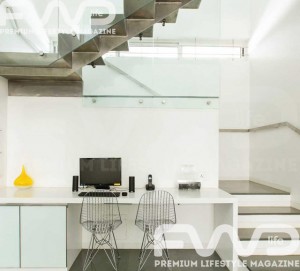 steel grills that throw playful shadows on the tall walls. Red cheeked bulbuls fly through the green, filling the house with their chirps. The home is most beautiful during the rains says the family. A folded stainless steel staircase connects the two levels, which was designed by the architect. Its fluid lines move seamlessly, supported by a single steel member and the glass railing. Your footsteps acquire another rhythm as you move from the SS stairs to the kota laid one. The architect has gone to lengths to explore materials not just in their physical attributes but their sensory ones too. The upper floors have the guest rooms and a party area connected by a bridge overlooking the family room. The roof moves your eyes, bending, pushing and hiding the ducts and a/c components in its aluminum guarded concrete belly. Not even books are visible on the shelves, no kids toys on the table, no handles for the doors or even shampoo bottles in the bathrooms. Everything is tucked away in built in storage. No light fittings jut off the walls. Special LED light strips give ample light in the evenings when the daylight is no longer available. Space and light thus flows unhindered in Nikunj, as the sun moves across the horizon.
steel grills that throw playful shadows on the tall walls. Red cheeked bulbuls fly through the green, filling the house with their chirps. The home is most beautiful during the rains says the family. A folded stainless steel staircase connects the two levels, which was designed by the architect. Its fluid lines move seamlessly, supported by a single steel member and the glass railing. Your footsteps acquire another rhythm as you move from the SS stairs to the kota laid one. The architect has gone to lengths to explore materials not just in their physical attributes but their sensory ones too. The upper floors have the guest rooms and a party area connected by a bridge overlooking the family room. The roof moves your eyes, bending, pushing and hiding the ducts and a/c components in its aluminum guarded concrete belly. Not even books are visible on the shelves, no kids toys on the table, no handles for the doors or even shampoo bottles in the bathrooms. Everything is tucked away in built in storage. No light fittings jut off the walls. Special LED light strips give ample light in the evenings when the daylight is no longer available. Space and light thus flows unhindered in Nikunj, as the sun moves across the horizon.
Architects: LIJO.RENY .architects
Plot: 13.3 cents
Area: 3750 square feet
Materials: concrete, steel, kota, quartz, Corian, granite, aluminium
Architecture
5 Sustainable Interior Design Trends to Embrace in 2024
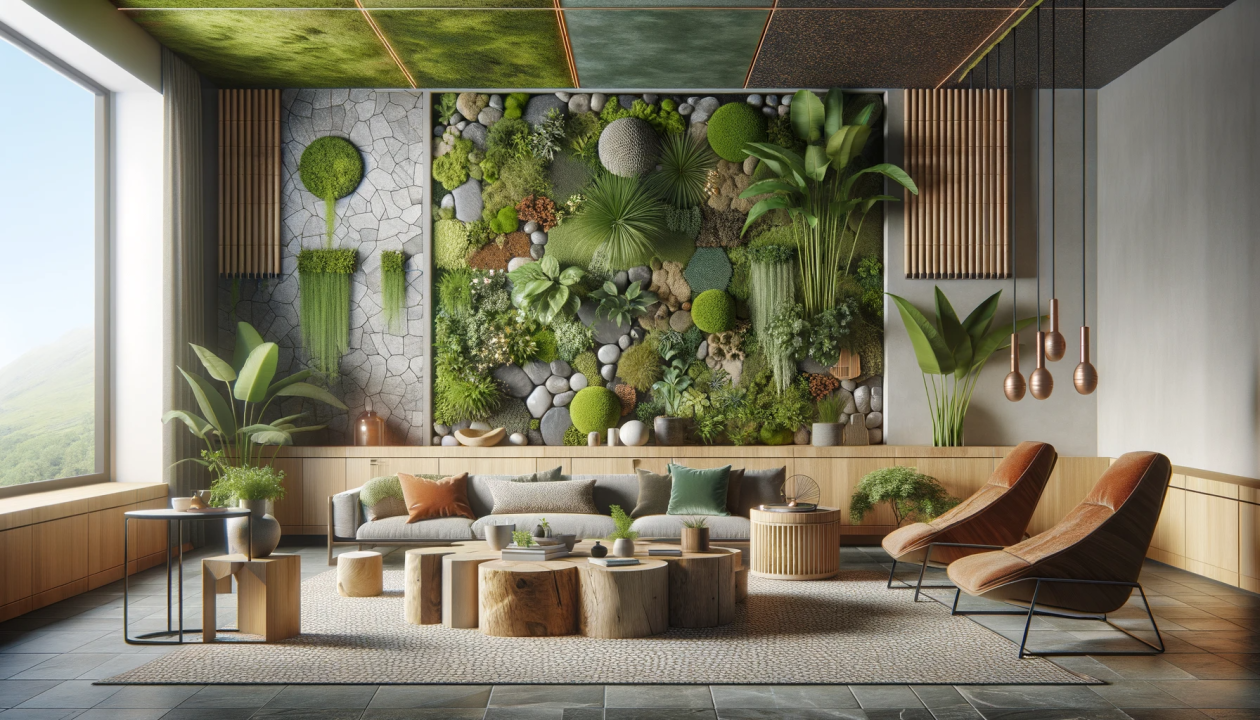
As the world becomes increasingly aware of the importance of sustainability, it’s no surprise that eco-friendly practices are making their way into the realm of interior design. In 2024, we can expect to see a surge in sustainable interior design trends that not only enhance the beauty of our living spaces but also minimise our environmental footprint. From repurposed materials to energy-efficient solutions, here are five sustainable interior design trends to embrace this year.
Upcycled Furniture:
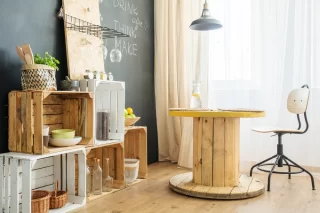
One of the most prominent sustainable interior design trends of 2024 is the use of upcycled furniture. Instead of buying new pieces, consider giving old furniture a new lease on life by refurbishing or repurposing them. From reclaimed wood tables to refurbished chairs, upcycled furniture adds character and charm to your space while reducing waste and conserving resources.
Biophilic Design:
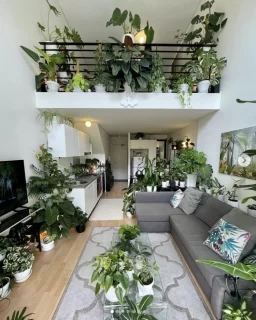
Biophilic design, which emphasizes a connection to nature, continues to gain popularity in 2024. Integrating natural elements such as plants, natural light, and organic materials into your interior design not only enhances aesthetics but also promotes well-being and sustainability. Consider incorporating living walls, indoor gardens, and sustainable wood finishes to bring the outdoors inside and create a healthier living environment.
Energy-Efficient Lighting:
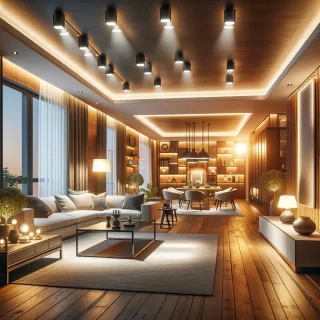
With a growing focus on energy conservation, energy-efficient lighting solutions are becoming a staple in sustainable interior design. LED lights, in particular, consume significantly less energy than traditional incandescent bulbs and last much longer, reducing both energy consumption and maintenance costs. Additionally, consider incorporating natural light sources such as skylights and large windows to maximize daylight and minimize the need for artificial lighting during the day.
Sustainable Textiles:
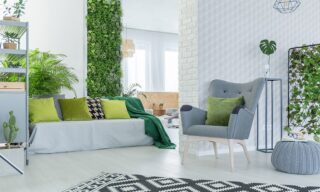
When it comes to upholstery and soft furnishings, opting for sustainable textiles is key to reducing environmental impact. Look for fabrics made from organic or recycled materials, such as organic cotton, hemp, bamboo, or recycled polyester. These materials not only reduce the use of harmful chemicals and pesticides but also minimize waste and support eco-friendly production practices. Additionally, consider investing in durable, high-quality textiles that stand the test of time, reducing the need for frequent replacements.
Smart Home Technology:
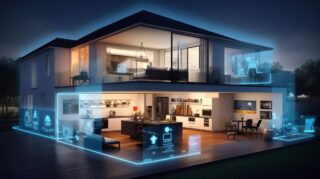
In 2024, smart home technology continues to evolve, offering innovative solutions for sustainable living. From smart thermostats that optimize energy usage to home automation systems that control lighting and appliances, these technologies can help reduce energy consumption and increase efficiency in your home. Additionally, smart home devices such as occupancy sensors and smart meters provide valuable insights into your energy usage, empowering you to make informed decisions about resource management and conservation.
As we strive to create more sustainable living environments, embracing these five interior design trends can help reduce our environmental impact while creating beautiful and functional spaces. Whether you’re upcycling old furniture, incorporating natural elements, or investing in energy-efficient technologies, every sustainable choice contributes to a greener future for generations to come. So let’s embrace these trends and make sustainability a cornerstone of our interior design practices in 2024 and beyond.
Architecture
Designing a Functional Home Office: Tips for Productivity and Comfort
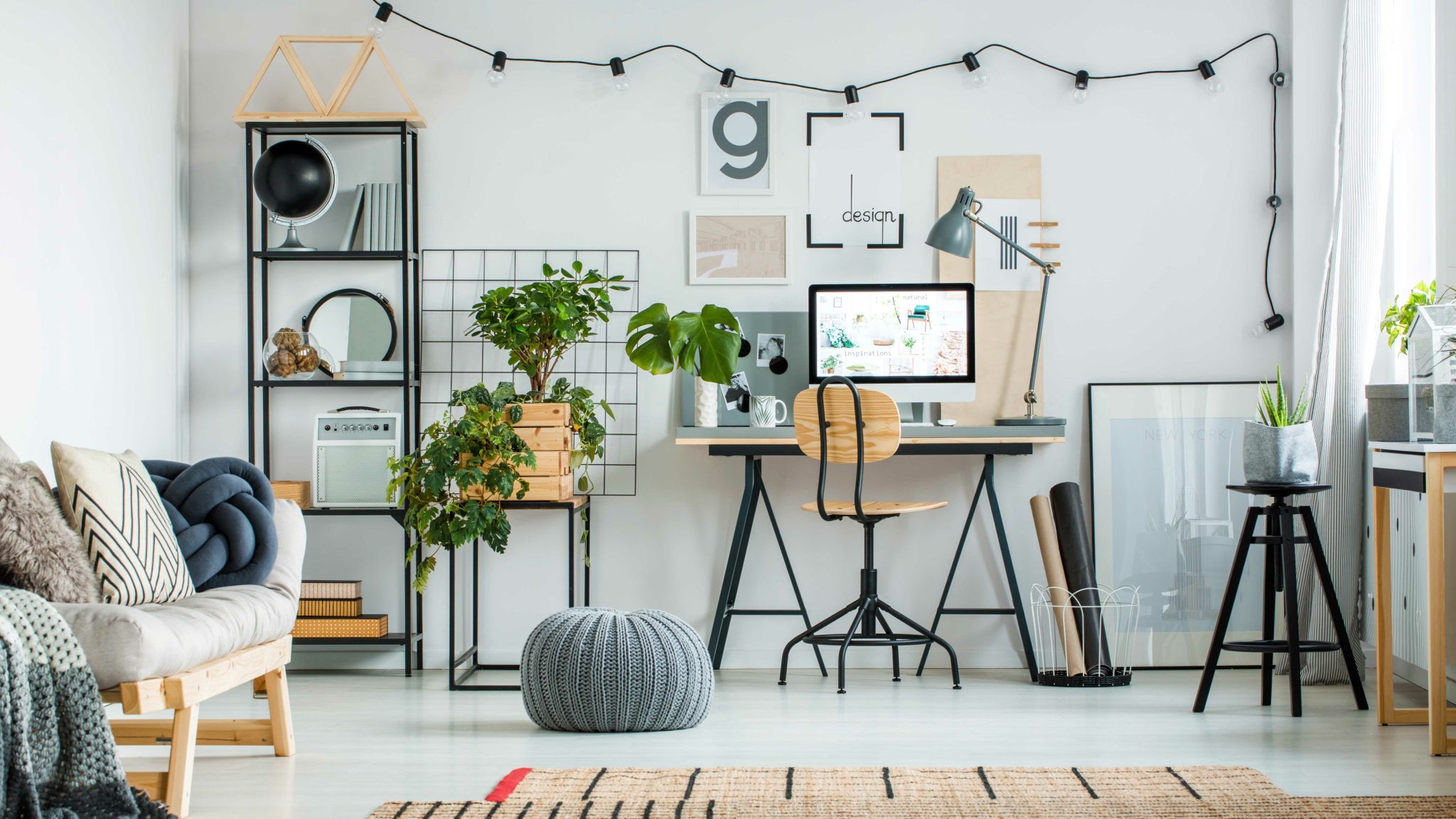
In today’s ever-evolving work landscape, the home office has become an essential sanctuary for productivity and creativity. Whether you’re a remote worker, freelancer, or entrepreneur, designing a functional home office is paramount for maintaining focus, maximizing efficiency, and enhancing overall well-being. Here are some expert tips to help you create a workspace that promotes productivity and comfort:
Choose the Right Location
Select a quiet and well-lit area in your home that is conducive to work. Ideally, this space should be away from distractions like heavy foot traffic or noise from common areas.
Invest in Ergonomic Furniture
Your office chair and desk are vital components of your workspace. Invest in ergonomic furniture that promotes good posture and reduces the risk of discomfort or injury during long hours of work.
Prioritize Natural Light
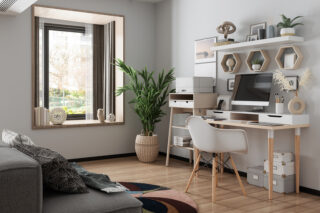
Position your desk near a window to take advantage of natural light. Natural light not only enhances mood and energy levels but also reduces eye strain and fatigue.
Declutter Regularly
Keep your workspace clutter-free by organizing cables, files, and supplies. A clean and organized environment fosters clarity of mind and helps minimize distractions.
Personalize Your Space
Incorporate elements that inspire and motivate you, such as artwork, plants, or motivational quotes. Personalizing your space can boost creativity and make your home office feel more inviting.
Optimize Technology Setup
Ensure that your technology setup including your computer, monitor, keyboard, and mouse is optimized for efficiency and comfort. Consider investing in accessories like an adjustable monitor stand or a wireless keyboard and mouse for added flexibility.
Incorporate Greenery
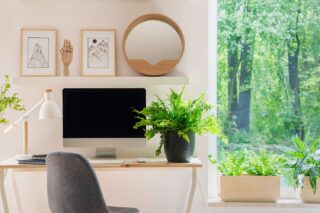
Introduce plants into your home office to improve air quality and add a touch of nature to your space. Plants not only enhance aesthetics but also have been shown to reduce stress and increase productivity.
Create a Distraction-Free Zone
Minimize distractions by setting boundaries with family members or roommates and establishing specific work hours. Consider using noise-canceling headphones or a white noise machine to block out unwanted sounds.
By implementing these tips, you can design a home office that promotes productivity, creativity, and overall well-being. Remember that every individual’s needs and preferences are unique, so feel free to experiment and adjust your workspace to suit your specific requirements. With a well-designed home office, you’ll be better equipped to tackle your tasks with focus, efficiency, and comfort.
Architecture
A Guide to Choosing the Perfect Colors for Your Home Interior

Your home is your sanctuary, and choosing the right colors for its interior can significantly impact the atmosphere and ambiance of each room. Whether you’re looking to create a cozy retreat, a vibrant living space, or a serene oasis, selecting the perfect color palette is key. In this guide, we’ll walk you through the process of choosing the right colors for your home interior to reflect your personal style and create a harmonious living environment.
Consider the Mood You Want to Create:
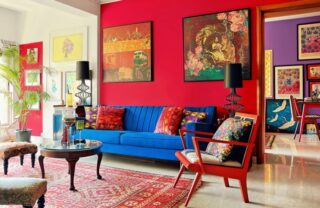
The first step in choosing the right colors for your home interior is to consider the mood or atmosphere you want to evoke in each room. Do you prefer a calming and serene space, or are you looking for something more vibrant and energizing? Think about how you want to feel when you’re in each room and choose colors that align with those emotions.
Take Lighting into Account:
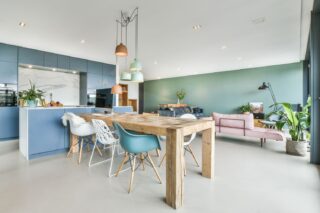
Lighting plays a crucial role in how colors appear in a room. Natural light can enhance certain hues while making others appear dull. Consider the direction and intensity of natural light in each room when choosing paint colors. Rooms with ample natural light can handle bold and vibrant colors, while those with less light may benefit from softer, lighter shades.
Create a Cohesive Color Scheme:

To ensure a cohesive flow throughout your home, choose a consistent color scheme that ties all the rooms together. You can achieve this by selecting a few key colors and using them in different combinations throughout the house. Neutral colors like whites, grays, and beiges make excellent base tones, while accent colors can add pops of personality and interest.
Explore Color Psychology:
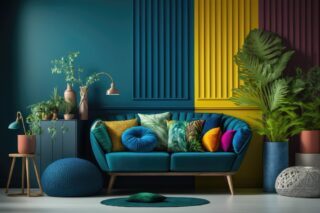
Color psychology can help you understand how different colors can affect mood and behavior. For example, blue is often associated with calmness and tranquility, making it an excellent choice for bedrooms and bathrooms. Yellow, on the other hand, can evoke feelings of happiness and energy, making it ideal for kitchens and living areas. Consider the psychological effects of each color when making your choices.
Test Paint Samples:
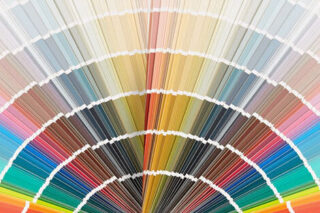
Before committing to a color for your walls, it’s essential to test paint samples in the actual space. Paint a small section of the wall with your chosen colors and observe how they look throughout the day in different lighting conditions. This will help you make an informed decision and ensure that you’re happy with the final result.
Don’t Forget About Accents and Accessories:
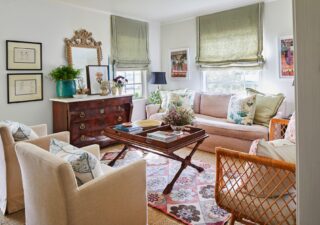
In addition to wall colors, consider how accent pieces and accessories can complement your chosen color scheme. Throw pillows, rugs, curtains, artwork, and furniture upholstery can all add depth and dimension to your space while tying the room together visually.
Choosing the right colors for your home interior is a personal and creative process that can transform your living space into a place you love to call home. By considering the mood you want to create, taking lighting into account, creating a cohesive color scheme, exploring color psychology, testing paint samples, and incorporating accents and accessories, you can design a home that reflects your unique style and personality. So, let your creativity flow, and enjoy the process of bringing your vision to life!
-

 Entertainment3 months ago
Entertainment3 months agoThe Stunning looks from Bhagya Suresh’s Wedding
-

 Fashion3 months ago
Fashion3 months agoMost Discussed Ajrakh Saree of Alia Bhatt
-

 Entertainment3 months ago
Entertainment3 months agoThe Most Stylish Guests of Bhagya Suresh Reception
-

 Entertainment4 months ago
Entertainment4 months agoEverything about the Ira Khan wedding that is out of the norm
-

 Entertainment3 months ago
Entertainment3 months agoBridal Bliss : All Bridal Looks of Swasika Vijay
-

 Entertainment3 months ago
Entertainment3 months agoAll About The Dreamy Pre Wedding Invite Of Anant Ambani & Radhika Merchant
-

 Fashion3 months ago
Fashion3 months agoMajor Denim Trends You Need To Know in 2024
-

 Entertainment3 months ago
Entertainment3 months agoBest Looks from Golden Globes 2024

